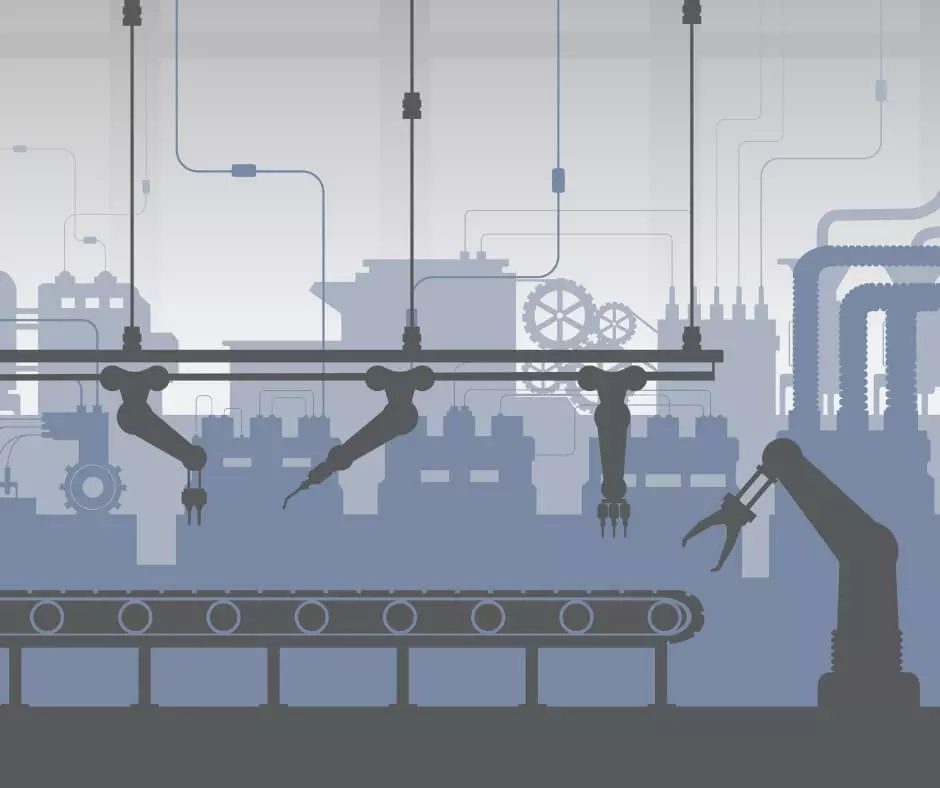
Productive cycles and robotic cells
A robotic work cell is really able to take a production reality to another level. The greatest advantage of installing a robotic island in a company is certainly that of having a considerable increase in production that can be measured immediately. But how can a robotic island really revolutionize the company's production cycle? Let's see it together.
Robot and man
The added value of a human component in companies is undeniable, however there are a few details that make robots extremely performative.
With industrial robots there is the possibility to extend work sessions well beyond 24 hours without ever compromising product quality. Opposite to humans, robots are not subject to loss of attention or fatigue, so they are able to maintain constant performance and guarantee optimum output. This makes them extremely reliable and high-performance tools.
The cell can operate in autonomy even for long periods of time (depending on the type of processing). The operator's role in a robotic cell is therefore limited to that of supervisor, i.e. periodic verification of correct operation and management of any alarms or end-of-cycle.
The technical manager or the supervisor can keep the whole system under constant control, even being in a different position from the one where the cell is located, thanks to the various possibilities that we at Tera Automation offer for remote monitoring of the robotic cell.
Video monitoring solutions, real-time management of production data, augmented reality devices allow the manager to perform supervision and management operations from anywhere, anytime.
This type of industrial automation allows the company to lift the employees from heavy and potentially dangerous tasks and to assign them to more qualified, less alienating and safer tasks, maintaining ,at the same time, complete control of work even when they are executed without supervision.
Industrial robots and flexibility
The quality that has a big impact on the productive cycle is one of robotic cells’s internal qualities: flexibility.
Cells are flexible:
- In the application field
- In configuration
- In the management of formats
- In reconversion
Let’s quickly see in the detail this big advantage.
For flexibility in the application field we mean that a robotic cell, maintaining its central structure (which is robot + machine) can adapt to any kind of industrial field. A cell programmed for the packaging of medicines, for example, can easily be adapted to the cosmetic field. Making only small changes, the same automation can be used again. This makes it the perfect tool for companies that add or convert branches of production.
For flexibility in configuration instead we mean the scalability and modularity: it’s possible to make quick and easy changes or later expansions. Moreover, robotic cells can adapt to the client’s requests of space and are insertable at any point of the production line in (the beginning, in the meantime, at the end): they can be real independent and compact laboratories, able to work in autonomy.
What makes a robot cell flexible in format management, however, are the adjustments to the devices for gripping the articles to be handled, as well as, of course, the programming of the work cycles linked to each format. Modifications are minimal and can be carried out quickly.
Intelligent technology and ready-to-use
Our T-Flexicell robotic cells, in addition to 2D or 3D vision systems, can be equipped with a system of storage and intelligent management of production data that allows the connection between machinery and ERP company. We are talking about JARVIS: this informatic product property of Tera Automation creates a real time database while the machine is working, collecting production data specifically picked by the client, which changes from machine to machine.
For example, JARVIS is able to generate immediate graphs that highlight the pieces handled/machined correctly and the moments in which the machine made errors and under the supervision of which operator these conditions occurred. This way, we can fully track the machine and have reliable data on its performance.
This way production and control in a minor number of steps, are combined to obtain a smart management of the entire process.
Moreover, the robotic cell is practically ready to use and can be installed in a short time. After that, all that is needed is a quick training session for the operator to supervise it.
Putting all these aspects together, it is evident that the company's production cycle is completely revolutionized. The production times are faster and do not suffer drops, the staff is requalified to supervisory tasks that, supported by computer tools, can prevent the incidence of errors that burden the company output.
